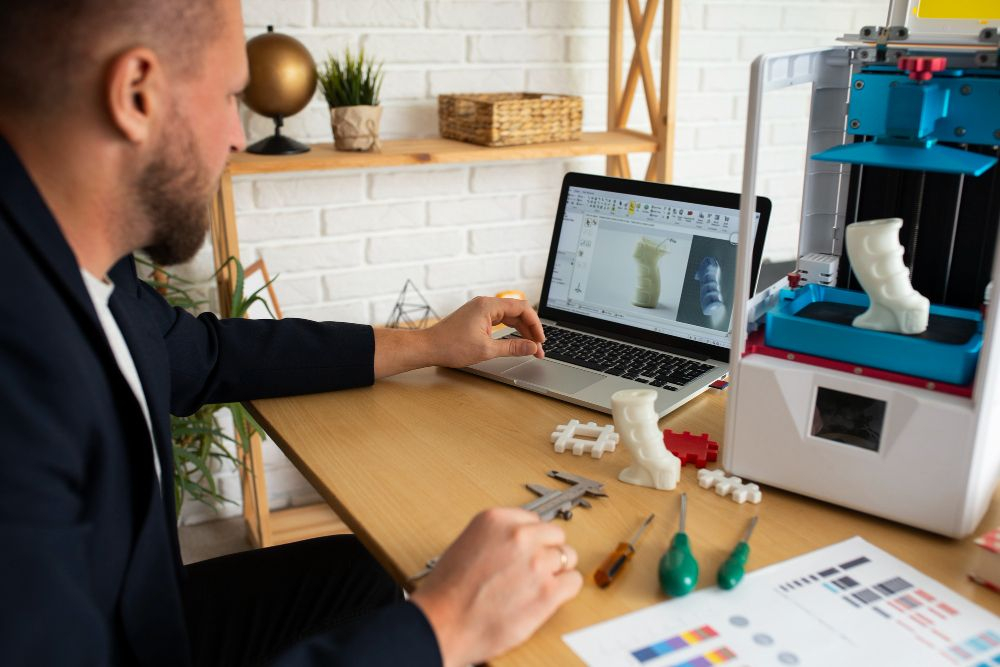Master of Design Courses: Advanced Studies in Creativity
Share

For those looking to take their design skills to the next level, pursuing a Master of Design course can provide the advanced studies needed to excel in this competitive industry. With a focus on creativity, problem-solving, and cutting-edge technology, these programs offer a unique opportunity to hone your skills and explore new avenues of design.
The Importance of Pursuing Master of Design Courses
A Master of Design course goes beyond the basic principles of design and delves into the deeper aspects of creativity and innovation. By exploring advanced topics such as design thinking, user experience, and sustainability, students are able to develop a more holistic understanding of the design process. This advanced knowledge allows designers to push the boundaries of what is possible and create truly innovative solutions to complex problems.
In addition to its exploration of design principles, a Master of Design course plays a pivotal role in preparing students for leadership roles within the creative industry. It equips them with the skills to manage design projects effectively, collaborate across disciplines, and communicate their ideas persuasively. Furthermore, the emphasis on research and critical analysis fosters a deep understanding of market trends and user needs, enabling designers to tailor their solutions with precision. This blend of theoretical knowledge and practical application not only enhances career prospects but also cultivates a mindset geared towards continuous innovation and adaptation in a rapidly evolving global market. As such, pursuing a Master of Design is not just about acquiring technical expertise but also about embracing a broader vision of design’s potential impact on society and the environment.
Enhancing Creativity and Innovation through Master of Design Courses
Creativity is at the core of design, and a Master of Design course provides the perfect environment for nurturing and enhancing this essential skill. Through hands-on projects, collaborative work, and critical analysis, students are able to unlock their full creative potential and develop a unique design style. By pushing themselves outside of their comfort zones and experimenting with new ideas, students are able to break through creative barriers and produce cutting-edge work that pushes the boundaries of traditional design.
Embracing Technology and Cutting-Edge Tools through Master of Design Courses
In addition to fostering creativity, Master of Design courses also focus on harnessing the power of technology and cutting-edge tools to create innovative designs. From 3D modeling and virtual reality to data visualization and digital prototyping, students are exposed to the latest advancements in design technology. By mastering these tools, designers are able to bring their visions to life in ways that were once unimaginable, revolutionizing the way we think about design and pushing the industry forward.
The Future of Design Education
As we navigate an era defined by rapid technological advancements and global connectivity, the future of design education is poised to undergo profound transformations. A Master of Design course not only meets current demands but also anticipates future needs by preparing students to navigate complex challenges with creativity and innovation. This advanced education equips designers with the agility to embrace emerging technologies such as artificial intelligence, virtual reality, and augmented reality, which are increasingly integrated into design practices.
Moreover, the interdisciplinary nature of modern design education fosters collaboration across fields like engineering, psychology, and business, reflecting the interconnectedness of contemporary global challenges. By emphasizing design thinking methodologies, students learn to approach problems holistically, considering user experience, sustainability, and social impact. This holistic approach not only enhances the quality of design solutions but also prepares designers to address pressing issues such as climate change, urbanization, and healthcare accessibility.
Furthermore, the future of design education will likely see an increased emphasis on lifelong learning and adaptability. Designers will need to continuously update their skills and knowledge to remain relevant in a dynamic marketplace. Master of Design programs play a crucial role in instilling a growth mindset and a commitment to professional development. Through industry collaborations, internships, and real-world projects, students gain hands-on experience and build networks that are essential for career advancement.
A Master of Design course offers an unparalleled opportunity to advance your skills, expand your creativity, and embrace the latest technology in the field of design. By immersing yourself in advanced studies and pushing yourself to new heights, you can unlock your full potential as a designer and make a lasting impact on the world around you. Whether you are a seasoned professional looking to take your career to the next level or a student eager to explore new horizons, a Master of Design course is the perfect pathway to success in the exciting and ever-evolving world of design.

